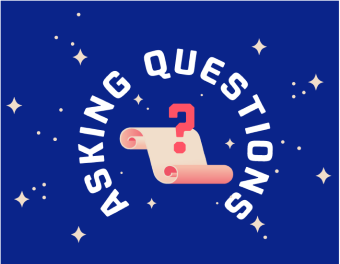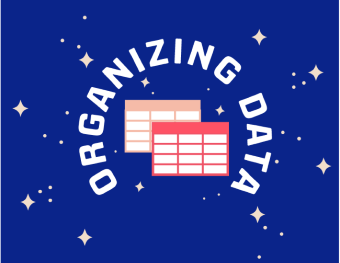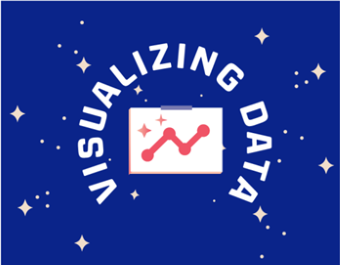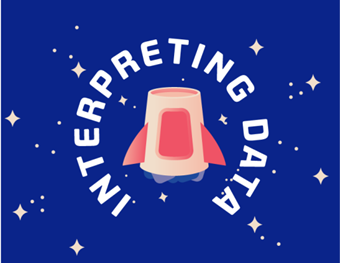Events
May 19, 6 PM - May 23, 12 AM
Calling all developers, creators, and AI innovators to join us in Seattle @Microsoft Build May 19-22.
Register todayThis browser is no longer supported.
Upgrade to Microsoft Edge to take advantage of the latest features, security updates, and technical support.
Hacking STEM is excited to partner with Blue Origin’s nonprofit, Club for the Future, to highlight how a data science process is used to help determine a Go/No-Go for launch of a Blue Origin New Shepard Rocket.
Data science has risen to a high level of importance. Now, more than ever, data is utilized to gain a better understanding of the world around us. Advancements in technology allow us to collect larger amounts of data more efficiently and use it in new ways, increasing the need for students to better understand how data science can be applied.
Prepare students to build the future by immersing them in fun and interactive activities as they learn about Excel and the data science process.
The interactive Microsoft Excel workbook guides students through how data scientists engage in a method called the data science process. Use these activities in Excel to explore the process data scientists use to ask good questions, organize, and visualize data and then use the data to make important decisions.
Excel is a tool used around the world to work with data. In these activities, students learn how to use Excel and complete all steps of a mission by engaging in the data science process.
In this mission, students analyze key weather data in determining flight safety parameters for a New Shepard rocket and ultimately make a Go/No-Go decision for launch. Students learn how to use Excel while engaging in this dynamic Data Science Process activity.
During the experience, students first formulate and ask questions related to factors that influence the stability of a rocket as it travels through the atmosphere. Then, using an atmospheric data set, students organize the data using Excel tools to gain meaningful insights. Next, students learn how to create charts and graphs using an AI enhanced feature in Excel.
In the final step, students interpret the visualized data to make a Go/No-Go determination for a rocket launch. The teams report their findings in a brief report to flight control.
With successful completion of all mission steps, students earn a Space Data badge and after completing the experience they earn a certificate.

In Step 1 of the data science process, students ask questions. The questions are directly related to factors that impact the stability of a rocket as it travels through Earth's atmosphere. Then narrow the focus to a single question that can be answered by investigating data.
Age: 11-15 years old
Length: 60 minutes
Lesson highlights:
Learning standards:
Resources:

Organizing data is the next step in the data science process. Collected sets of data can be extremely large. In the role as a data scientist, you must make the data manageable by using the power of digital tools to better understand the impact of wind on our rocket launch.
Age: 11-15 years old
Length: 60 minutes
Lesson highlights:
Learning standards:
Resources:

Step 3 in this data science process is the creation of visual interpretations of our data, such as charts and graphs. They allow data scientists to see the data in ways that numbers and text just can't provide. The task is to use our organized data from Step 2 and create a chart showing our maximum allowable wind speeds at different elevations.
Age: 11-15 years old
Length: 60 minutes
Lesson highlights:
Learning standards:
Resources:

In Step 4 of the data science process, your team interprets the visualized data from Step 3 to make a Go/No-Go determination for a rocket launch. The team reports their findings in a brief report to flight control.
Age: 11-15 years old
Length: 60 minutes
Lesson highlights:
Learning standards:
Resources:
Relevance. Data Science is one of the fastest growing professions, according to the Bureau of Labor Statistics. Every industry needs data analytics – including business in all sectors, healthcare, education, and every form of social programming. Inspiring the advancement of NextGen’s data analytics skills is to stimulate reasoning, discourse, and decision-making, ultimately creating a smarter world for us all.
Equity for All. Multimodal, dynamic, scaffolded instructions support learners at multiple readiness levels and from diverse backgrounds.
Accessibility. Designed to open doors to student participation in the data science revolution, these lessons are supported on any internet-enabled device. Use a larger screen (laptop or desktop) for the best experience.
Aligned to Standards. All activities are aligned to key Next Generation Science Standards (NGSS), International Society for Technology in Education (ISTE) standards, and Computer Science Teacher Association Standards (CSTA) standards.
Mix and match with these supplemental activities to get your students excited about STEM, space, and data science!
Use the Excel workbook in Microsoft Teams Create an assignment (Introduction to the Data Science Process) in Microsoft Teams for Education and assign the Excel workbook to individual or small groups of students in a class. Groups turn in one copy of the assignment that can be graded separately or together. Learn how here.
You can integrate other hands-on STEM projects into your classroom! Try projects such as building a robotic hand, making a battery out of a lemon, or measuring water quality. Visit aka.ms/HackingSTEM to learn more.
We would love to hear your thoughts on the Introduction to the Data Science Process materials! Let us know what works well for you, what could be better, and what you'd like to see in the future.
Events
May 19, 6 PM - May 23, 12 AM
Calling all developers, creators, and AI innovators to join us in Seattle @Microsoft Build May 19-22.
Register todayTraining
Module
Leverage data for action with Microsoft Education Insights - Training
Educators learn the features of Microsoft Education Insights and how to leverage the tools to identify trends and inform decision making to best support students.
Certification
Microsoft Certified: Azure Data Scientist Associate - Certifications
Manage data ingestion and preparation, model training and deployment, and machine learning solution monitoring with Python, Azure Machine Learning and MLflow.
Documentation
Microsoft and NASA collaborate to celebrate data. View on-demand events with astronauts, explore data-packed Excel workbooks.
Kiki is an endangered Southern Resident orca living in the Salish Sea. Use data in Excel to explore why the orca population is declining.
Hacking STEM - Microsoft Learn Educator Center